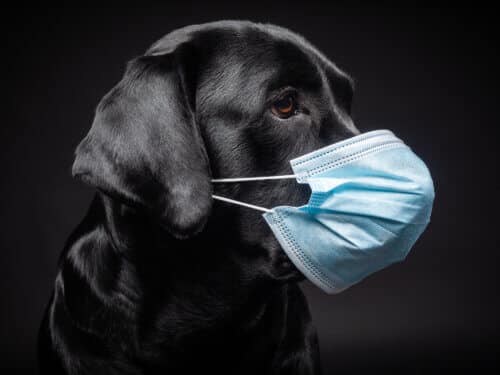The winters in Denmark are not alone, many animals have been infected with the corona virus, some develop diseases, others are only used as surrogates. In any case, they maintain a reservoir for corona viruses to develop again and become violent

Researchers tested virus infection in wild animals and farm animals. During the epidemic, cats, dogs andMany animals in zoos who were infected with the virus even when the caregivers took precautions such as masks and distancing.
In December, the US Department of Agriculture announced that Wild animals have been discovered infected with the virus, therefore the question arises, do people infect wild animals? to check it Two scientists turned To study the transitions of the virus between animals, including humans.
Scientists call the passage of a virus from one animal species to another - 'spillover'. Governing does not happen easily because in order to infect a new species, the virus must be able to bind to a protein on the new cell and then enter the cell while evading the defense systems and antibodies that it has not encountered before. In addition, to pass into a new species, it must divide in large quantities. Therefore, there is a high chance of the virus spreading between two closely related species. It is known that chimpanzees are infected with many viruses that are common among the human population.
While there are viruses that remain in one species, others are capable of gliding between species, for example the flu that infects A large variety of animals,
It turns out that the corona virus has the ability to jump between species, which raises the question of how many and which species may be infected with the disease and which species may be surrogates of the virus without getting sick?
For an animal to transmit the virus to a human, it must be exposed to a high dose to become infected, with the greatest risk being through direct contact, such as veterinary care or contact between a sick person and a farm animal. An infected farm animal will be an intermediate "host" that will transmit the virus to a wild animal. Another infection possibility exists from funnels where a variety of viruses are released into nature without proper treatment. For example, marine mammals in California were infected with the virus.
To test the spread of the virus, the researchers collected data and samples from 20 species of wild animals and from 300 animals treated by veterinarians. No signs of infection were found in bats, seals and coyotes. Other researchers discovered contagion among wild animals that were in the neighborhood of winter farms The high density in farms is a fertile ground for infection and distribution.
Sometimes when a virus passes into a new species, it changes while replicating and adapting to a more effective infection, a process called "host adaptation". The results of such an infection cannot be predicted, for example when the virus jumped andInfested winters in Denmark, a new mutation was created that was rare in humans.
Which means that in the future other mutations of the virus may be discovered in other animals that will become hosts. A situation that suggests a risk to wild animal populations and may harm species that are already in danger, such as ferret species that are close to winters and are known for their sensitivity to viruses.
The spread of diseases from humans to animals has already happened in the past. This is what happened when the Ebola virus jumped and infected the great ape species and caused devastating results.
So is the case of the respiratory virus (HRSV) which caused the death of mountain gorillas.
Since the "COVID" epidemic endangers wild animals, it is possible that the greater risk to humans is the possibility that the virus will establish a reservoir in more wild animals and in other areas. Such a situation would allow infection from animals to humans and return to animals in cycles, which is probably already happening in Denmark even if on a small scale.
Discovery of dogs, cats, animals in zoos, infected winters in the USA, verifies the fears of the pandemic and the cycle of the epidemic.
This is the summary of the research findings. I am not an epidemiologist and my understanding of medicine is minimal, and yet it is more for me to add on a personal note, because I found it appropriate to bring the Prime Minister to repeatedly emphasize the close connection between humanity and nature and the need to stop harming nature and the environment. This harm causes mortal harm to the human population.
If the invasion of areas where there are wild animals continues, and the damage to nature continues, the chances of epidemic outbreaks that are just waiting to slip from wild animals, from the natural hosts, and infect humans will increase.
Scientists estimate that there are thousands of diseases in animals (zoonotic). In savannahs, forests, lakes and seas "lurk" deadly viruses that, if any damage to nature - may cause epidemics. Therefore, maybe even those who do not see the importance of preserving nature will mobilize to protect the environment in order to protect themselves?
Again and again it is clear that it is important that instead of controlling the environment for the sake of the human population there should be control of the human population for the sake of the environment.
More of the topic in Hayadan:
